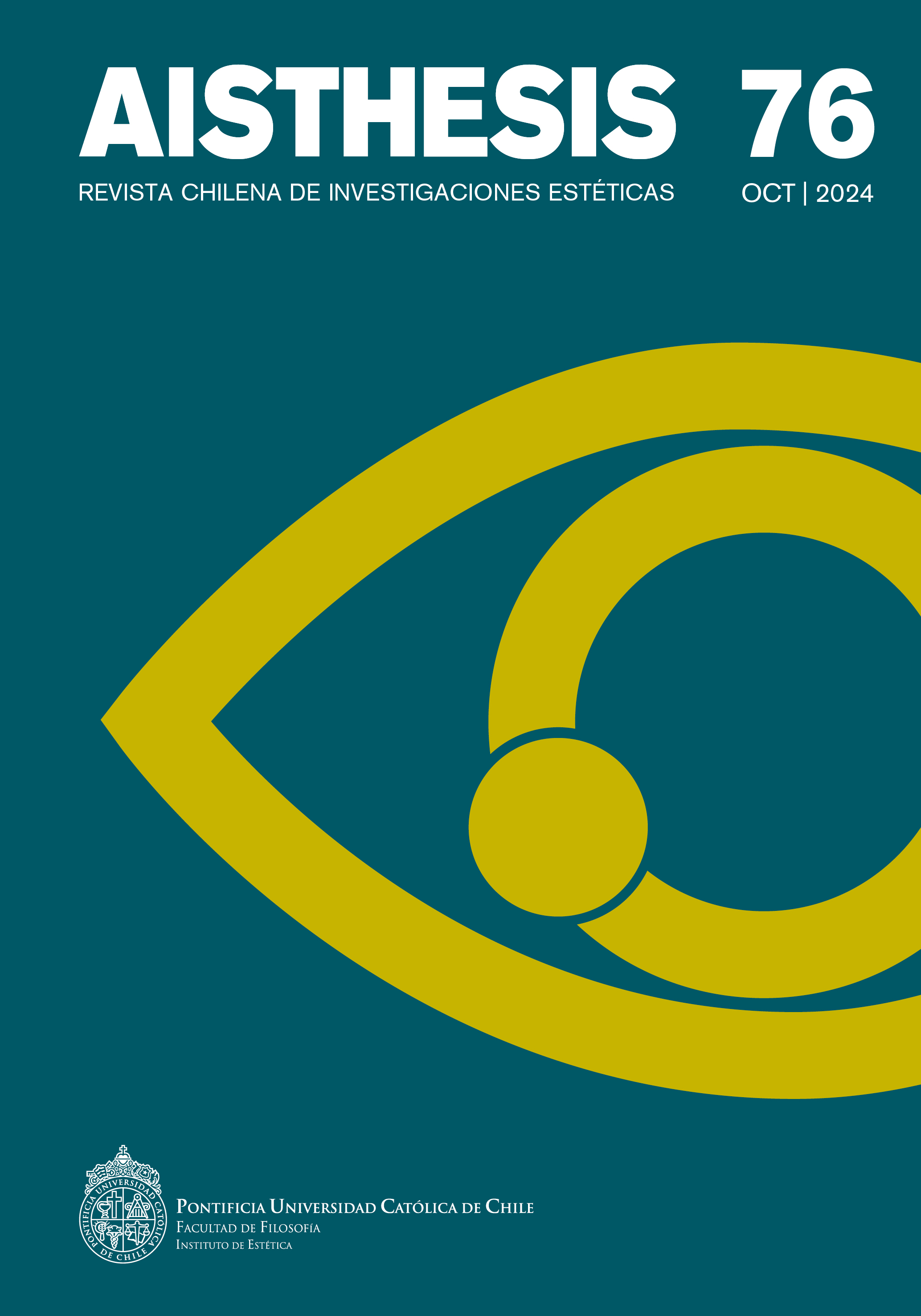Guernica, the Chilean Social Uprising and a Rethinking of an Aesthetic The Artistic Rupture Proposed by Miguel Ángel Kastro’s Street Art
Main Article Content
Abstract
This article is an aesthetic and symbolic reflection that takes artist Miguel Ángel Kastro’s revision of Guernica as its starting point. The analysis and its relevance within the 2019 social uprising in Chile will allow us to establish how certain works of art, considered canonical within Western art, can be re-read and recontextualized to express different urgencies and demands than those originally intended, within what some authors have called “art in flux.” Along these lines, the authors will briefly review the historical origins of Chilean street art as a history of a revisited canon and will explore how some of these expressions insert themselves within what is called a “post-historical art.” As a final heading, the article will reflect on what it means for Kastro’s work to be the frontispiece for the Museum of the Social Uprising in the Bellavista neighborhood of Santiago.
Downloads
Article Details

This work is licensed under a Creative Commons Attribution-NonCommercial-ShareAlike 4.0 International License.
All contents of this electronic edition are distributed under the Creative Commons license of "Attribución-shareAlike 4.0 Internacional" (CC-BY-SA). Any total or partial reproduction of the material must mention its origin.
The rights of academic works published in this publication belong to their authors., who grant to AISTHESIS: Revista Chilena de Investigaciones Estéticas the license for its use. The management of the permits and the authorization of the publication of the images (or of any material) that contains copyright and its consequent rights of reproduction in this publication is the sole responsibility of the authors of the articles
References
Referencias
Aguilera, Cinthya y Sammy Espinoza. Un kolor distinto: arte, muralismo, graffiti. Narrativa Punto Aparte, 2019.
Ardenne, Paul. Un arte contextual: creación artística en medio urbano, en situación, de intervención, de participación. Cendeac, 2006.
Bennett, Tony. Museums, Power, Knowledge: Selected Essays. Routledge, 2018.
Cristancho, Raúl. Picasso: Estudios sobre papel para Guernica. Banco de la República, 1992.
Clemens, Justin y Dominic Pettman. Avoiding the Subject: Media, Culture and the Object. Amsterdam University Press, 2004.
Danto, Arthur. Después del fin del arte: el arte contemporáneo y el linde de la historia. Paidós, 1999.
Déotte, Jean-Louis. «The Museum, a Universal Device». Museum International, vol. 59, nº 3, 2007, pp. 68-79.
Fernández Arenas, José y Fernando Torrijos. Arte efímero y espacio estético. Anthropos, 1988.
Gordon-Zolov, Terri y Eric Zolov. The Walls of Santiago: Social Revolution and Political Aesthetics in Contemporary Chile. Berghahn Books, 2022.
Groys, Boris. Arte en flujo: ensayos sobre la evanescencia del presente. Caja Negra Editora, 2016.
Huyssen, Andreas. After the Great Divide: Modernism, Mass Culture, Postmodernism. Indiana University Press, 1986.
Latorre, Guisela. Democracy on the Wall: Street Art of the Post-Dictatorship Era in Chile. Ohio State University Press, 2019.
Nieto Alcaide, Victor. «El Guernica de Picasso. Idea y permanencia de una obra maestra». El Guernica recobrado: Picasso, el franquismo y la llegada de la obra a España, editado por Genoveva Tusell. Ediciones Cátedra, 2017, pp. 15-23.
Palmer, Rod. Arte callejero en Chile. Ocho Libros, 2011.
Rodríguez-Plaza, Patricio. Pintura callejera chilena: manufactura estética y provocación teórica. Ocho Libros, 2011.
Taylor, Diana. The Archive and the Repertoire: Performing Cultural Memory in the Americas. Duke University Press, 2003.
Tusell, Genoveva, editora. El Guernica recobrado: Picasso, el franquismo y la llegada de la obra a España. Ediciones Cátedra, 2017.
Van Hensbergen, Gijs. Guernica: La historia de un icono del siglo xx. Debate, 2004.
